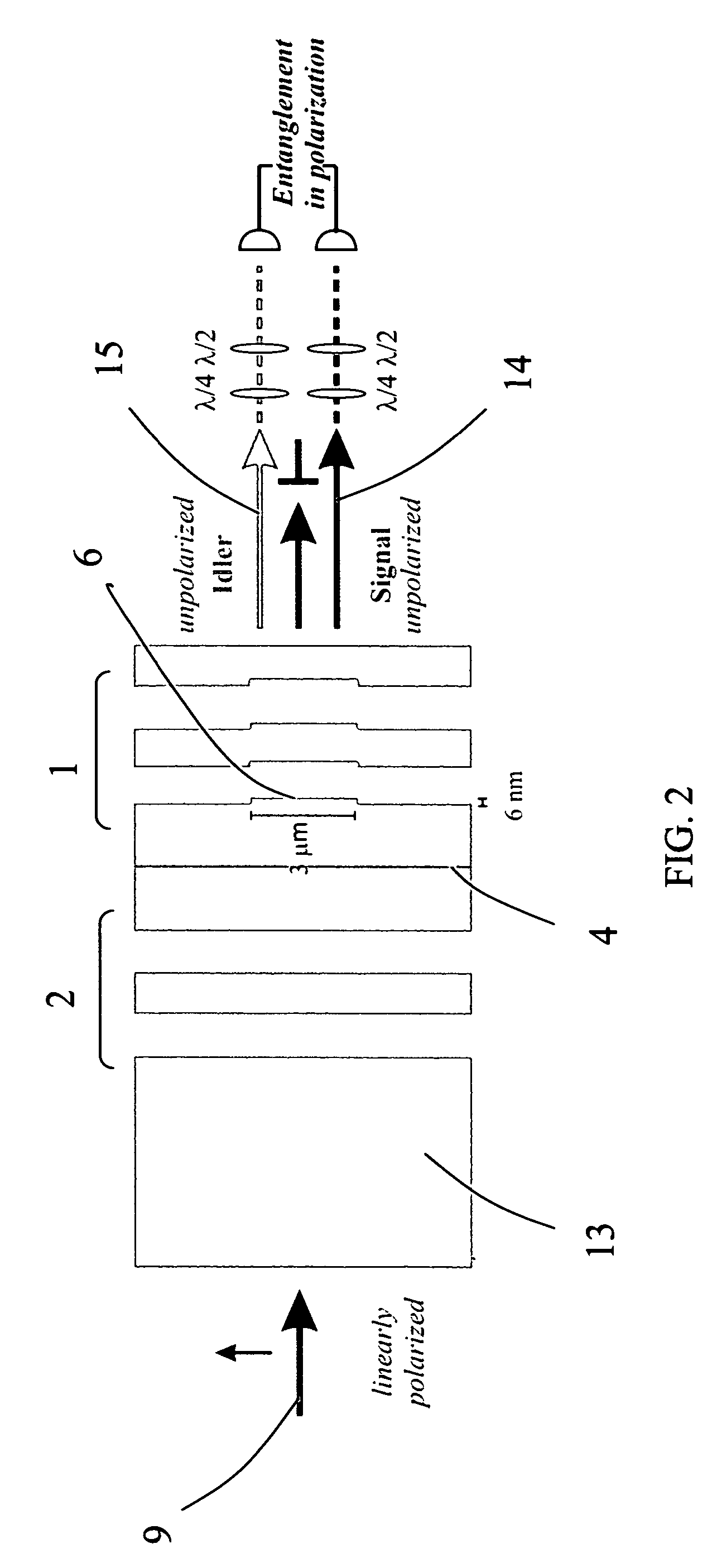Near infrared twin photon source
- Summary
- Abstract
- Description
- Claims
- Application Information
AI Technical Summary
Benefits of technology
Problems solved by technology
Method used
Image
Examples
Embodiment Construction
[0037]An optical parametric oscillator structure according to one embodiment of the invention is shown in FIG. 1. It includes a microcavity comprising two Bragg reflectors 1, 2 formed of alternating layers of GaAs and AlAs. The Bragg reflectors 1, 2 are separated by two semiconductor layers 3 of GaAs that surround a single quantum well 4 of In0.04Ga0.96As. Its fundamental energy level corresponds to a wavelength of 835 nm. The quantum well is slightly doped (14%) with In which allows to excite the microcavity through the GaAs substrate and to collect the light in transmission.
[0038]The distance between the Bragg reflectors corresponds to the wavelength of the fundamental quantum well level. Thus, the formation of a polariton, i.e. the superposition of a photon and an exciton in the strong coupling regime is granted. The semiconductor layers are sequentially grown on a substrate13 using molecular beam epitaxy (MBE). For the purpose of illustration only a reduced number of the semicon...
PUM
| Property | Measurement | Unit |
|---|---|---|
| height | aaaaa | aaaaa |
| height | aaaaa | aaaaa |
| length | aaaaa | aaaaa |
Abstract
Description
Claims
Application Information
 Login to View More
Login to View More - R&D
- Intellectual Property
- Life Sciences
- Materials
- Tech Scout
- Unparalleled Data Quality
- Higher Quality Content
- 60% Fewer Hallucinations
Browse by: Latest US Patents, China's latest patents, Technical Efficacy Thesaurus, Application Domain, Technology Topic, Popular Technical Reports.
© 2025 PatSnap. All rights reserved.Legal|Privacy policy|Modern Slavery Act Transparency Statement|Sitemap|About US| Contact US: help@patsnap.com



